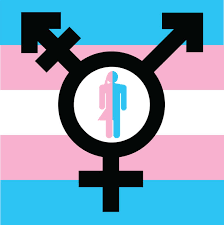The term "sissy" is one that has sparked debates and discussions throughout its history. While it may conjure images of childhood teasing or traditional gender roles, its meaning has transformed over time, adapting to cultural shifts and conversations about gender identity. In this article, we’ll explore what "sissy" means today, its historical significance, its portrayal in pop culture, and the nuances surrounding its use and interpretation.
Understanding the Term ‘Sissy’: A Quick Overview
At its core, the term "sissy" is often used to describe someone—typically a male—who is perceived as being effeminate or lacking traditional masculine qualities. It’s derived from the word "sister," hinting at characteristics associated with femininity. This label can be both derogatory and affectionate, depending on the context in which it’s used. In some cases, it can reflect a playful teasing among friends, while in others, it serves as a harsh insult meant to demean and belittle.How To Start Gender Transition
The complexities of the term extend beyond its basic definition. For some, "sissy" has become a term of endearment or community among those who embrace non-normative expressions of gender. However, the word’s history is fraught with implications that can lead to bullying and social ostracism, especially when used in derogatory contexts. Understanding the term requires an appreciation of its varied applications across different social landscapes.
The Historical Context of the Word ‘Sissy’
Historically, the word "sissy" emerged in the late 19th century, often used to describe boys who did not conform to rigid societal expectations of masculinity. Society at the time upheld strong gender dichotomies, and boys were expected to be tough, aggressive, and stoic. Those who displayed sensitivity or gentleness were often labeled "sissies," marking them as deviants in the eyes of their peers. This usage reinforced toxic masculinity, contributing to a culture of bullying and exclusion.
Over the decades, the term has been contextualized in various ways, often overlapping with broader societal issues of gender and sexuality. In the mid-20th century, as LGBTQ+ movements began to gain momentum, "sissy" took on additional connotations linked to sexual orientation. It became not only a term of derision but also a means of marginalizing those who identified outside traditional norms, reflecting larger societal anxieties about masculinity and gender identity.
How ‘Sissy’ Is Used in Popular Culture Today
In modern popular culture, "sissy" appears in a variety of contexts, from children’s media to adult entertainment. Movies and TV shows sometimes employ the term humorously, portraying "sissy" characters as quirky or endearing. In contrast, others use it to illustrate the pressures of conforming to gender norms, often highlighting the struggles of those who feel out of place in a hyper-masculine world.
Social media has also played a significant role in shaping contemporary understandings of "sissy." Influencers and activists have taken to platforms like TikTok and Instagram to share personal stories and promote visibility around non-traditional masculinity. These narratives have led to a more nuanced perception of the term, illustrating how its meaning can differ widely based on personal experience.
The Evolution of ‘Sissy’ in Language and Meaning
The meaning of "sissy" has evolved considerably over the years, transitioning from a purely derogatory term to one that can embody a more complex identity. Language is fluid, and as society reexamines gender constructs, so too does the terminology we use. While many still view "sissy" as a slur, others have begun to embrace the term, reclaiming it as a badge of honor.
This reclamation reflects a broader social movement towards inclusivity and acceptance of diverse gender expressions. Words once used to demean can become empowering when embraced by the communities they once marginalized. As the discourse surrounding gender identity continues to expand, the term "sissy" may further evolve to accommodate new understandings and expressions of identity.
Stereotypes and Misconceptions Around Being a ‘Sissy’
Despite the growing acceptance of diverse gender expressions, stereotypes surrounding the term "sissy" persist. Many still equate "sissy" with weakness or inferiority, perpetuating harmful notions about masculinity. This oversimplified view overlooks the rich tapestry of experiences from those who are labeled as such. It wrongly assumes that emotional expressiveness or a penchant for traditionally feminine interests equates to a lack of strength or capability.
These misconceptions can have damaging effects, particularly for young boys navigating their identity in a world that often punishes deviation from traditional norms. The pressure to conform can lead to internalized shame, mental health struggles, and even violence. Challenging these stereotypes is crucial for fostering a society in which individuals can freely express themselves without fear of retribution.
The Impact of ‘Sissy’ on Gender Identity Conversations
In recent years, the term "sissy" has become an important touchpoint in discussions about gender identity. As more people come out as non-binary, genderqueer, or transgender, the conversation around what it means to be "masculine" or "feminine" has become increasingly nuanced. "Sissy" can serve as a lens through which we examine and challenge rigid gender norms, encouraging a broader acceptance of diverse identities.
The dialogue surrounding "sissy" also intersects with discussions of privilege and marginalization within gender identity conversations. Recognizing that the term can be weaponized against those who don’t fit into traditional molds allows for a deeper understanding of the complexities surrounding gender. This recognition can foster empathy and awareness, helping to dismantle harmful stereotypes and promote acceptance.
Embracing ‘Sissy’: The Positive Reclamation Movement
As conversations around gender continue to evolve, many individuals are reclaiming the term "sissy" as a form of empowerment. They view it as a celebration of uniqueness, creativity, and emotional transparency. This reclamation mirrors other movements in LGBTQ+ communities where derogatory terms are transformed into symbols of pride and resistance.
This positive embrace of "sissy" seeks to challenge the stigma attached to non-conformity, encouraging individuals to be unapologetically themselves. By embracing the term, people aim to foster a sense of solidarity and community, allowing those who feel marginalized to find strength in their identities and shared experiences. This movement has sparked a broader cultural shift toward acceptance and understanding of diverse expressions of gender.
In conclusion, the term "sissy" encapsulates a wide range of meanings and implications, reflecting both the struggles and triumphs of those navigating gender identity. While it has historically been used as a means of ridicule, its evolution and reclamation signify a growing acceptance of diverse expressions of masculinity and femininity. As society continues to challenge traditional gender norms, understanding the complexities of "sissy" can play a vital role in fostering a more inclusive world. Embracing this term, along with its rich history, helps pave the way for meaningful conversations about identity, acceptance, and empowerment in an ever-changing cultural landscape.


